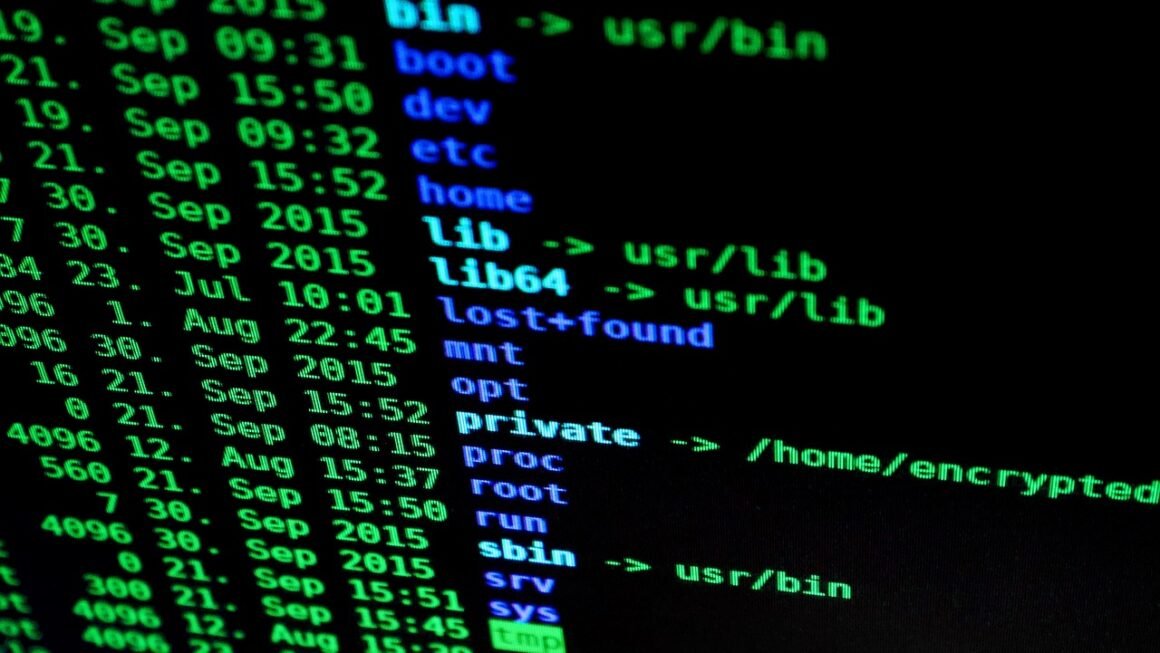Cybersecurity is no longer a passive game of waiting for alerts to fire. In today’s complex threat landscape, organizations need to be proactive in identifying and neutralizing threats before they cause significant damage. This is where threat hunting comes in. It’s the art and science of proactively searching for malicious activity that has bypassed traditional security defenses. This blog post will delve into the world of threat hunting, exploring its methodologies, benefits, and how it can significantly enhance your organization’s security posture.
What is Threat Hunting?
Defining Threat Hunting
Threat hunting is a proactive cybersecurity activity focused on identifying and analyzing suspicious activity within an organization’s network and systems. Unlike traditional security measures that react to known threats, threat hunting involves actively searching for indicators of compromise (IOCs) and anomalous behavior that might indicate a successful attack. Think of it as actively searching for a hidden intruder, rather than waiting for them to trigger an alarm.
The Difference Between Threat Hunting and Incident Response
While both threat hunting and incident response are crucial components of a robust security program, they differ significantly in their approach:
- Threat Hunting: Proactive, hypothesis-driven, seeks out unknown threats. It’s exploratory and aims to discover previously undetected malicious activity.
- Incident Response: Reactive, alert-driven, responds to known incidents and focuses on containment, eradication, and recovery.
In essence, threat hunting aims to prevent incidents, while incident response aims to manage them. A successful threat hunt can lead to the discovery of a potential incident before it escalates, thus triggering the incident response process.
The Threat Hunting Process: A Step-by-Step Guide
The threat hunting process typically follows these steps:
Why is Threat Hunting Important?
Beyond Traditional Security: Filling the Gaps
Traditional security solutions like firewalls and antivirus software are designed to detect and prevent known threats. However, sophisticated attackers often use advanced techniques to bypass these defenses, leaving their activities undetected. Threat hunting helps to bridge this gap by proactively searching for these hidden threats.
Proactive Security: Staying Ahead of the Curve
By proactively hunting for threats, organizations can identify and neutralize malicious activity before it causes significant damage. This proactive approach allows them to stay ahead of the curve and minimize the impact of potential attacks. For example, discovering a dormant ransomware implant during a threat hunt can prevent a devastating ransomware attack.
Enhancing Visibility: Uncovering Hidden Threats
Threat hunting provides deeper visibility into an organization’s security posture by uncovering hidden threats and vulnerabilities that might otherwise go unnoticed. This improved visibility can help organizations to better understand their risk profile and prioritize security investments.
Improved Incident Response: Faster and More Effective
Threat hunting can significantly improve the effectiveness of incident response by providing valuable context and intelligence about ongoing attacks. This information can help incident responders to quickly contain and eradicate threats, minimizing the impact on the organization.
- Example: A threat hunt identifies a compromised user account exhibiting lateral movement. This discovery allows the incident response team to quickly isolate the account and prevent further damage.
Essential Tools and Technologies for Threat Hunting
SIEM (Security Information and Event Management)
SIEM systems are essential for collecting, aggregating, and analyzing security logs from various sources across the organization. They provide a centralized platform for threat hunters to search for suspicious activity and identify potential IOCs.
EDR (Endpoint Detection and Response)
EDR tools provide real-time monitoring and analysis of endpoint activity, allowing threat hunters to detect and respond to threats on individual devices. They often include features like behavioral analysis, threat intelligence integration, and automated response capabilities.
Network Traffic Analysis (NTA)
NTA tools analyze network traffic to identify suspicious patterns and anomalies that might indicate malicious activity. They can help threat hunters to detect network-based attacks, such as data exfiltration and command-and-control communication.
Threat Intelligence Platforms (TIPs)
TIPs aggregate and analyze threat intelligence data from various sources, providing threat hunters with valuable information about known threats, attack techniques, and IOCs. This information can be used to inform threat hunting hypotheses and prioritize investigations.
Forensic Tools
Forensic tools are used to analyze compromised systems and gather evidence of malicious activity. They can help threat hunters to understand the scope of an attack and identify the attacker’s methods.
- Example: Using a memory forensics tool to analyze a compromised server reveals the presence of a rootkit that was not detected by traditional antivirus software.
Building a Successful Threat Hunting Program
Defining Objectives and Scope
Before embarking on a threat hunting program, it’s essential to define clear objectives and scope. What types of threats are you most concerned about? What systems and data are you going to focus on? Having a clear understanding of these factors will help you to prioritize your efforts and measure the success of your program.
Assembling a Skilled Threat Hunting Team
Threat hunting requires a team of skilled security professionals with expertise in areas such as:
- Security analysis
- Network security
- Endpoint security
- Malware analysis
- Forensic investigation
- Scripting and automation
The team should also possess strong analytical and problem-solving skills, as well as a deep understanding of the organization’s IT environment.
Developing and Documenting Procedures
Documenting your threat hunting procedures is crucial for ensuring consistency and repeatability. This documentation should include:
- Hypothesis generation techniques
- Data collection methods
- Analysis techniques
- Investigation procedures
- Remediation steps
- Reporting guidelines
Training and Education
Regular training and education are essential for keeping your threat hunting team up-to-date on the latest threats, attack techniques, and tools. This training should include both theoretical knowledge and practical exercises.
Continuous Improvement
Threat hunting is an iterative process that requires continuous improvement. Regularly review your threat hunting procedures, tools, and techniques to identify areas for improvement. Incorporate lessons learned from previous hunts to refine your approach and enhance your effectiveness. For example, if a specific hunting technique consistently uncovers valuable findings, prioritize and refine that technique for future hunts.
Conclusion
Threat hunting is an essential component of a modern cybersecurity strategy. By proactively searching for hidden threats, organizations can significantly enhance their security posture, reduce their risk of attack, and improve their incident response capabilities. While building a successful threat hunting program requires investment in tools, expertise, and training, the benefits far outweigh the costs. Embracing a proactive, threat-centric approach to security is crucial for staying ahead of the ever-evolving threat landscape and protecting your organization from the devastating consequences of a cyberattack. Start small, iterate, and build upon your successes to create a robust and effective threat hunting program that truly enhances your organization’s security resilience.



